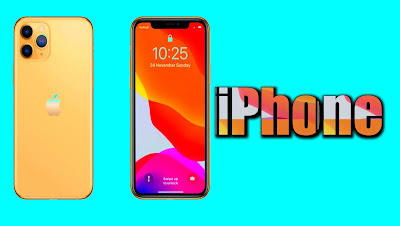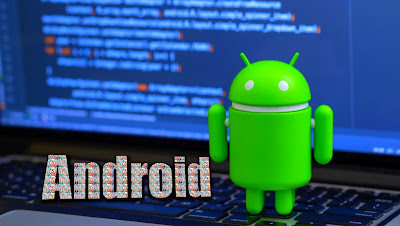Operating System Wars: Windows, macOS, Linux, Android, Chrome OS | Which is the Best for Your Business?
You've heard of different operating systems in the past, but regarding choosing one for your business computer or laptop, you're not sure which one to pick. We'll address each of the most popular operating systems and their benefits in this article.
Blog List:
1. Windows: Microsoft's flagship operating system
2. macOS: Apple's operating system, also known as OS X.
3. Linux: A free and open-source operating system
4. Android: Google's mobile operating system, used on smartphones and tablets
5. Chrome OS: Google's operating system for laptops and Chromebooks
{tocify} $title={Table of Contents}
1. Windows: Microsoft's flagship operating system
The Windows operating system is the flagship product of Microsoft Corporation. It is the most widely used operating system in the world, running on almost 90 percent of the world’s computers. The Windows operating system was first released in 1985. It is developed by Microsoft, which is located in Redmond, Washington.
Windows, along with Internet Explorer, is one of the two major components that make up Microsoft’s flagship product line. However, Windows is not limited to just running on Windows. It runs well on other operating systems, such as Apple’s Mac OS X, hardware Windows, and AIR operating systems.
Windows Vista is the latest operating system released by Microsoft. It was rated as the number one most successful desktop operating system by PC Magazine. Windows Vista was voted the number one most powerful software upgrade for Windows PCs in 2008 in PC World’s best Windows upgrades of 2008 list.
Although accounting for over 90 percent of the world’s computers, Windows still receives over 70 percent of the corporate PC market share. Currently, Windows 7 accounts for 30% of all PCs sold, making it the most popular version of Windows. Windows 8 came out in November 2012 and is the second major version of the Windows operating system. It was Microsoft’s second major OS upgrade after Windows Vista.
Older Software It was surprising when Microsoft bought Pointy in 2010. At the time, Microsoft was the market leader, having sold over 72 percent of all desktop operating systems in 2010. Microsoft’s previous market leader, Windows XP, had sold only about 22 percent of all computers globally in 2001. The average age of Microsoft’s software portfolio at the time of the acquisition was 12 years old.
Although Asia-Pacific and Europe had the most older software, other areas of the world had older operating systems as well.
Operating systems such as Apple’s iPod, Nokia’s Blackberry operating system, RIM’s BlackBerryOS, and BlackBerry’s QNX were written in the mid-1990s. Certain countries, such as Japan, had outdated versions of popular operating systems, such as MS Office.
2. macOS: Apple's operating system, also known as OS X.
Apple's operating system, also known as OS X or macOS, is a desktop operating system that powers Mac computers. It's a Unix-based operating system, which means that it's built on the open-source operating system BSD. Because it's based on Unix, macOS has many of the same features as Linux.
2. Macbook Air
The Macbook Air is one of Apple's most popular portable computers. It’s slim and portable (even smaller than some slabs of granite), and can take up as little as 16GB of space. It’s also user-friendly and easy to use. That’s because it’s powered by the same 1.4GHZ ~1.5Ghz processor found in the iPhone. The processor is much more powerful than the previous generation's 2.3Ghz processor. In other words, if you want the best performance, you need to purchase the newest Macbook.
Macbook Pros and MacBook Airs both run on the same core operating system. Mac OS X (formerly named Apple Flight Simulator) features an “active-cooling” architecture. You can think of this as “Process Ivy,” which allows the central processor to cool itself as chips get used. This allows laptops to run faster and smarter. Mac OS X also features an integrated browser called Safari.
3. iPhone
The iPhone is a telecommunications device that runs on the Apple Inc. iPhone operating system. Like with Macs, the iPhone’s processor is based on the Arm processor family, which generally typically has a better performance-per-watt than Intel chips. You can read more about it on Gillian’s iPhone page.
4. iPod
Apple’s first portable music player was the iPod, which came out in 2001. As with Macs, the iPhone and iPod’s processors are based on the ARM processor family. Apple’s operating system, called iOS, includes an application programming interface (API) that lets iOS apps run directly on an iPhone. With apps, you’re given many of the iPhone’s most common functionality goals: you can check your messages, listen to music, watch videos, browse the web, and more.
Read More Details: Huawei Ark OS: The Future of the Internet
3. Linux: A free and open-source operating system
Linux is a free and open-source operating system that is available for computers, smartphones, and other devices. Linux is the most widely-used operating system on web servers and is the foundation of Android, the most popular operating system for smartphones. Windows 10, designed specifically with the user in mind, is the latest version of Windows and was released on July 29, 2016. It includes Microsoft’s next-generation security capabilities known as Edge and is manufactured by Microsoft.
Windows 8, or Windows 8 Home, was Microsoft’s failed attempt to revive the Windows name and mascot. Windows 7 and Windows Vista were also failed attempts at relaunching Microsoft’s desktop operating system.
Why You Should Use Linux for Your Website(s)
If you own a website, chances are you’ve heard about Linux. Why is Linux so popular? It’s obvious, but let’s delve into the nitty-gritty.
What’s the Difference Between Linux and Windows?
There is no Windows, and there is no Linux. Both Windows and Linux are completely free (except for upgrades and initial setup). Now, to be clear, I’m not suggesting that Windows is a bad OS due to being free. People both love and hate Windows, so how can I discredit its benefits?
Windows 8 and Windows 10 both offer a modern user experience by utilizing an open-source, Linux-based operating system called Windows 8 and Windows 10, respectively. Through what Microsoft calls “Modern Takeovers,” they have switched to a new, streamlined look and feel for their OS. Unlike Vista or 2008, they are capable of operating on all modern CPUs and chipsets.
In this article, we’re going to look at how to set up your website to run on Linux, and the benefits it offers, with Windows currently having an 18 month head start.
Preparation
Before getting started, you should download and install a few things:
A domain name. The domain name could either be your business’ brand name or the name of your website.
4. Android: Google's mobile operating system, used on smartphones and tablets
Android is a mobile operating system (OS) designed primarily for touchscreen mobile devices such as smartphones and tablet computers. Initially developed by Android, Inc., which Google backed financially and later bought in 2005, Android was unveiled in 2007 along with the founding of the Open Handset Alliance: a consortium of hardware, software, and telecommunication companies devoted to advancing open standards for mobile devices. Developed to encourage greater competition in the mobile operating system market, the OS launched in February 2009 and became the second-largest selling OS in Google's study of smartphone market share, with over 46% of market share at the end of 2013, trailing only iOS vs. Android
In the nearly eight years since its inception, Android has gone through a lot of redesigns and redesign additions. Included in that range are the most impossible of redesigns: Apple removing the Home Button, and Samsung replacing the icon with that of the S Pen. Needless to say, Android apps have come a long way since the days of WAI and Gingerbread.
In this post, I want to focus on the most important elements to understand when mobile app development works best. Specifically, I want to focus on:
What Android apps need to be built to optimize for the Apple App Store and its ecosystem?
- How to build apps that help mobile visitors (readers) find exactly what they’re looking for
- The formula for navigating app store optimization
- Sample mobile apps for iOS and Android
- The statistics
According to StatCounter, in Q1 2015 there were approximately 2.6 billion uninstalls of apps due to poor app experience. The number of app downloads also drastically fell in 2015, with approximately 900 million app downloads worldwide.
To understand the impact Google has had on developing and steadily improving its ecosystem, I wanted to revisit the concepts of App Store optimization and Google Play Optimization. Understanding what these two best practices are will help develop, launch, and maintain successful mobile SEO strategies.
There's no doubt about it; mobile is huge.
5. Chrome OS: Google's operating system for laptops and Chromebooks
Google's operating system for laptops and Chromebooks. It's based on Linux and open-source software, and was first released in 2009. It comes with Google-branded apps such as Gmail, Google Drive, Google Calendar, and Google Docs. However, Google won't tell people exactly what they have in their "All-In-One" computer. Most "Windows laptops" run a mixture of Windows 7 and Chrome OS, and will probably come loaded with some non-Google software such as Adobe's Creative Suite or Amazon's Ebookstore.
2. Chrome OS Chrome is a form-factor operating system created by Google. It was released in 2012 and is Google’s answer to Apple’s OS X, requiring no installation of anything on a computer. Instead, it simply runs Chrome software. Chrome devices only come with Chrome installed, and so users don't get the other benefits of using either Mac or Windows, such as access to additional software such as Photoshop.
3. Nexus One Google created its own operating system (called "Google OS," or Good), for low-cost Android phones. It was only released in 2015, and doesn't require any special accessories. The only difference is that Google OS includes Google Assistant.
4. Barbie Google CEO Sundar Pichai once said he considers the digital entertainment giant to be living "in another galaxy" from "above our heads." While it's difficult to imagine that Google has a computer in its basement (or Barbie A drugstore), they do have many devices that could fulfill that role: Low-cost, Android-based digital TVs, smart refrigerators, and entertainment systems like Google Chromecast and Google TV. However, Google continues to distance itself from creating gaming systems.
5. Maru It's easier to picture Google creating a sentient computer controlling a Star Trek-style device than it is to picture them marshaling a global infrastructure of gaming systems. Even simpler: It seems far more likely that they'd create Google Brain, similar to Winston from The Hitchhiker's Guide to the Galaxy. Augmented humans, a.k.a.
Conclusion: You need to evaluate each of these platforms to see if they're what your business needs to get the job done right. Read this article for more information on how you can pick the right platform for your needs!
Read More Details: 5 Reasons HarmonyOS Is the Future of Smartphones and How You Can Get Involved














0 Comments